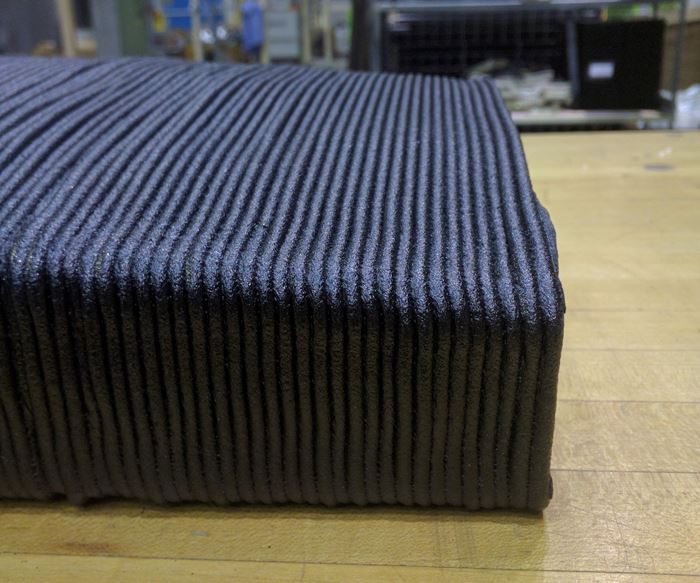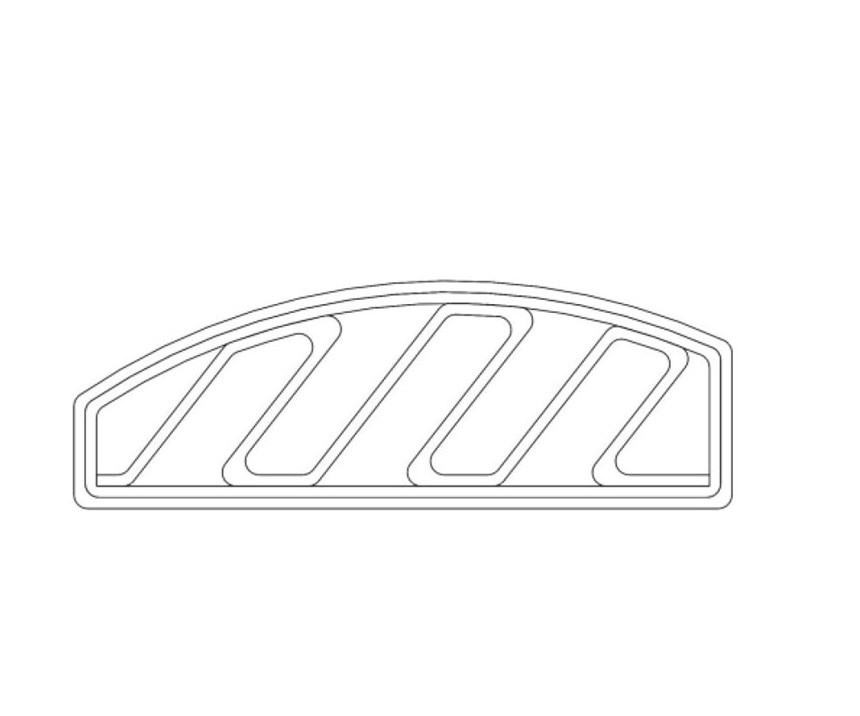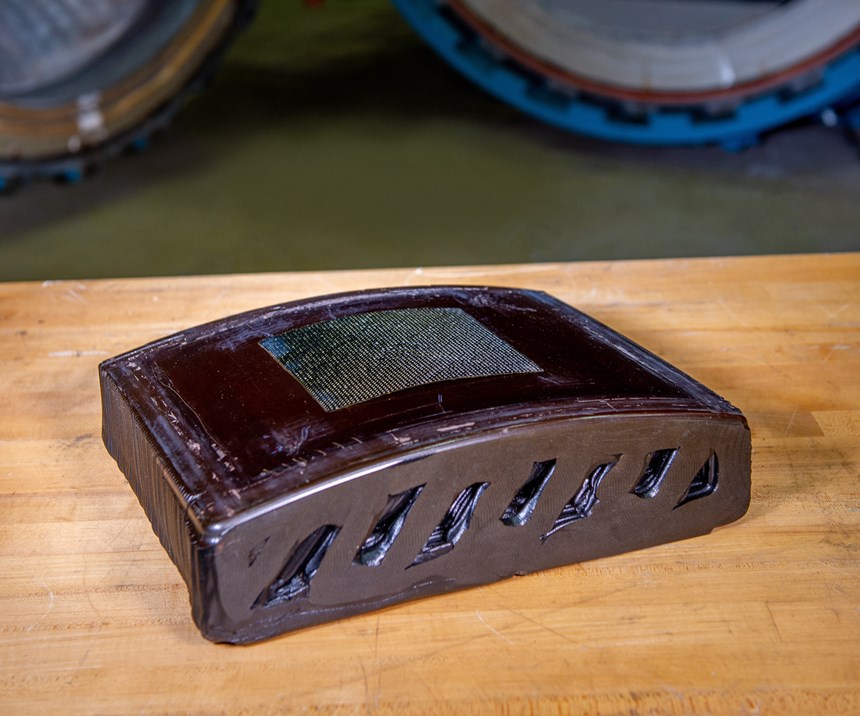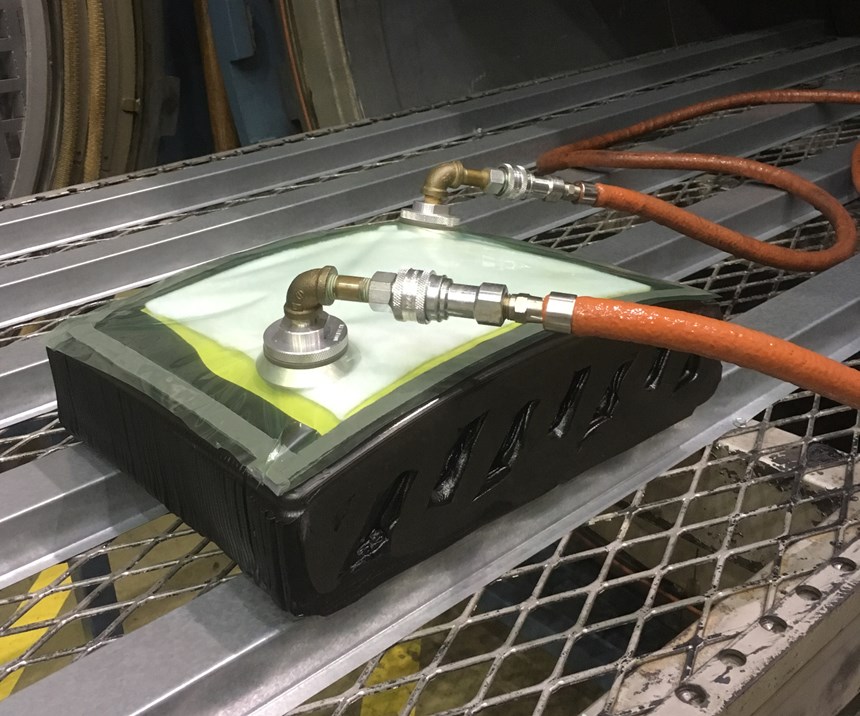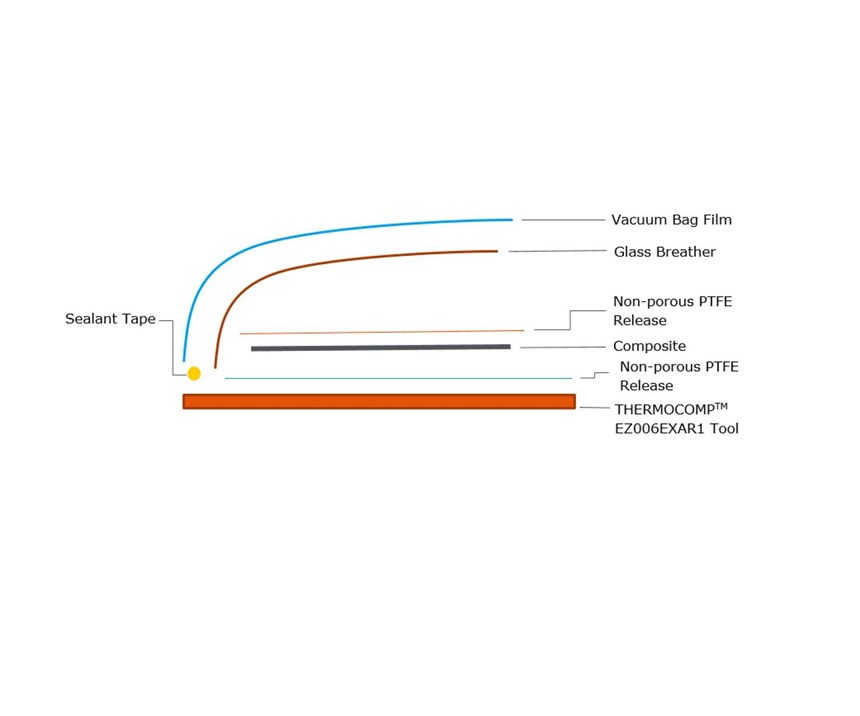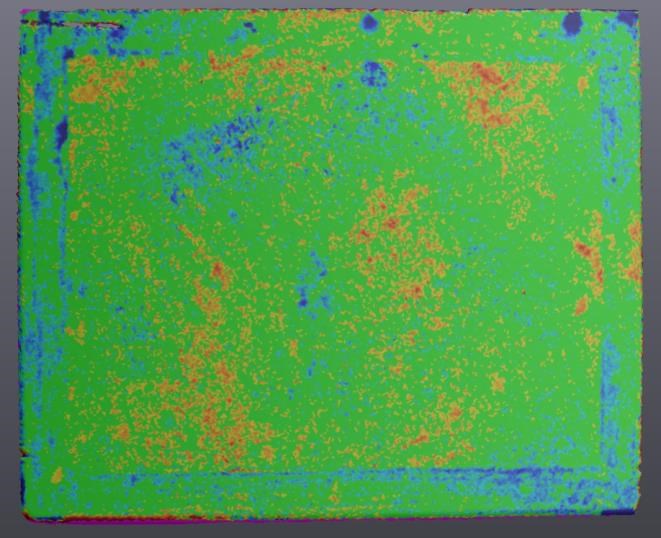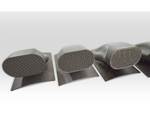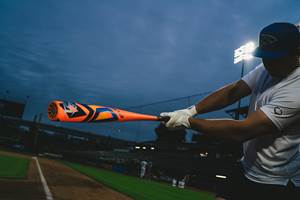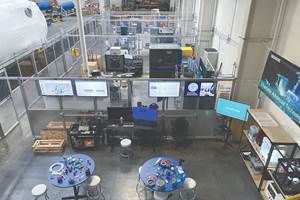Large-Format Additive Manufacturing: Viable for Autoclave Tooling?
SABIC and the University of Dayton Research Institute explore the potential of using large-format additive manufacturing (LFAM) technology for creating autoclave tooling used in manufacturing aerospace composite parts.
Share
Read Next
SABIC and the University of Dayton Research Institute have partnered on a project exploring the potential of using large-format additive manufacturing technology for creating autoclave tooling used in manufacturing aerospace composite parts.
In comparison to LFAM, CNC machining of metal to create autoclave tooling—the traditional approach—has upfront costs associated with both the material and the CNC time, as well as additional cost for design changes. The use of LFAM to create similar tools can help to reduce expense and time to create low volume, complex tools more quickly. Due to the increased print speed of LFAM versus CNC metal-machining, multiple design iterations can be 3D printed in the time that it would take to produce a single CNC metal tool. In addition, the ability to quickly 3D print a tool from a computer-generated file eliminates the need and cost for long-term storage of the tool, as a new tool can be printed if necessary.
Large-format additive manufacturing involving plastic materials performs 3D printing using plastic pellets melted via an extrusion barrel and extruded layer by layer to build a part. Since the LFAM process is pellet-fed, there is broad availability in feedstock, including filled thermoplastic compounds containing glass fiber, carbon fiber, minerals, etc. that give the designer the ability to provide strength and a coefficient of thermal expansion that cannot be achieved with unfilled resins. As parts get larger, the need for reinforcement becomes more critical to help maintain structure, both during printing and in final use.
LFAM provides the ability to print large parts not viable with smaller printing processes and enables the creation of complex geometric parts that would be difficult to produce using conventional processes such as injection molding. LFAM printing speeds enable fast prototypes and multiple iterations of a design, reducing development cycle times and lead times compared to traditional production methods. Low volume, customized production is possible with lower cost and time investment when viewed next to larger volume production methods that require upfront investment.
Finding the right resin/filler system combination for the rigorous autoclave environment became the challenge. To replace metal tools with LFAM tools, the material had to print well and also withstand the loads, temperature cycles and dimensional requirements needed for use. Dimensional stability of the printed tool was critical, as movement of the tool could have a negative effect on final part quality.
Selection
The autoclave tool referenced in this study required the ability to withstand an autoclave cycle at 350°F while under 85-90 psi pressure. The tool needed to withstand greater than 10 autoclave cycles, maintain vacuum integrity, and maintain dimensional profile tolerances of ±0.005 inches over the tooling surface before, during and after autoclaving.
For the tool’s material, the LNP Thermocomp AM EZ006EXAR1 compound was chosen because it provides a combination of Ultem resin, a well-known high temperature material used in aerospace applications, and a filler package for dimensional control.
The tool geometry selected for this study, one relevant to a wide range of industries and applications, is similar to parts used on military aircrafts. An oversized tool was designed to allow for the surface to be machined to the required final dimensions (see Figure 1).
The tool was printed at SABIC’s Polymer Processing Development Center (PPDC) in Pittsfield, Massachusetts, on Cincinnati Incorporated’s Big Area Additive Manufacturing (BAAM) machine.
The BAAM printer contains a single screw extruder with six heating zones. Each zone is capable of heating to 500°C and the screw is designed to process filled polymeric compounds. The 140-layer tool was printed in 2.5 hours using a double outer wall with a staggered line infill pattern (see Figure 2).
The LNP Thermocomp AM EZ006EXAR1 compound demonstrated consistent and stable bead dimensions during printing with a smooth surface on the bead. The overall part exhibited low levels of warping when examined after printing.
Because large-format additive manufacturing technology can print to a near-net-shape, only one machining operation was required to achieve final dimensions (see Figure 3). The machined tool was sent to Tru-Design in Knoxville, Tennessee for application of their TD Seal HT coating. Developed as a thin, spray-on coating that can bond to high temperature LFAM feedstocks without cracking during autoclave cycling, TD Seat HT, serves to provide a smooth and vacuum-tight tool surface.
Testing
Phase 1
The University of Dayton Research Institute performed the initial Phase 1 testing of the completed tool. During Phase 1 scanning and vacuum testing, no significant vacuum loss was detected, indicating that the TD Seal HT provided a good sealing surface.
Phase 2
The second phase of testing, autoclave cycling, was completed at SABIC’s PPDC facility. During each cycle, a composite layup was placed on the tool (see Figure 4) and autoclaved to cure the composite. The composite lay-up and autoclave process included two plies of RM 2005 epoxy/carbon prepreg, manufactured by Renegade Materials Corporation, and was laid up as illustrated in Figure 5.
For each autoclave cycle, the steps below were followed:
- Vacuum hold for 60 minutes at room temperature.
- Heat 5°F per minute to 350°F ±10°F with 30 ±5 psig applied pressure until temperature reaches 225°F ±5°F.
- After the temperature goes beyond 225°F, apply 85 ±5 psig autoclave pressure and vent to atmosphere.
- Hold temperature at 350°F ±5°F for 120-135 minutes.
- Cool at 5°F per minute. When temperature is below 302°F, release pressure.
This process was repeated five times. After the fifth cycle, the tool was scanned using a Creaform HandyScan 3D handheld scanner. Analysis of the scan revealed that 99.7% of the tooling surface was within ±0.004 inches of the baseline scan conducted after the Phase 1 testing was completed (depicted by the green shading found in Figure 9). This percentage represents three standard deviations of data distribution from the baseline.
Phase 3
The tool was subjected to an additional five autoclave cycles during Phase 3. The same procedure was used, but the autoclave pressure was increased to 85 psig from 100 psig. Once the cycles were completed, the tool was scanned again.
In comparison to the baseline scan, the results were similar to those seen after the first five autoclave cycles: 99.7% of the tooling surface was within ±0.004 inches of the baseline scan.
Phase 4
In Phase 4, the tool was exposed to a final 10 cycles of autoclaving using the same lay-up as in the Phase 3 testing. Once all of the cycles were completed, the tool was scanned again and compared to the original baseline. As seen in the previous comparisons, 99.7% of the tooling surface was within ±0.004 inches of the original baseline scan.
Results
After the first five autoclave cycles, the tool exhibited minimal movement of ±0.004 inches away from the baseline. An additional 15 cycles showed similar scans, indicating that the initial movement that occurred was isolated to the first five autoclave cycles. After the first five autoclave cycles, the tool stabilized and did not continue to move during the remaining autoclave cycling testing. For the purposes of this study, only permanent deformation of the tool was recorded, not temporary movement that might occur during the actual autoclave process.
Only when lowering the acceptance threshold to 0.001 inches could the direction of the tool surface movement be seen (Figure 9). No distinctive trend was found other than an inward movement around the periphery of the tool, which is most likely a result of surface wear resulting from vacuum tape scraping and removal.
Large-format additive manufacturing is a viable process for producing autoclave tooling.
The final results indicated that, after five standard 350°F autoclave cycles, the tooling showed movement of less than ±0.004 inches. This is within the ±0.005-inch tolerance common in the aerospace industry. Almost no subsequent movement occurred after an additional 15 cycles.
While the authors and team recognize the need, moving forward, to quantify the actual time and cost savings using LFAM versus incumbent tooling approaches in future work, initial estimates show significant savings in both time and cost.
This study confirms that large-format additive manufacturing is a viable process for producing autoclave tooling that can withstand at least 20 standard autoclave cycles without introducing dimensional inaccuracies into the part.
Related Content
Savage Automation Delivers 3D Printed Commercial Manufacturing Aids
The company's approach to designing end-of-arm tooling and other devices has evolved over the years to support longevity and repairs.
Read MoreLouisville Slugger Uses Formlabs Technology to Accelerate Innovation
Louisville Slugger relies on Formlabs’ Form 3 stereolithography 3D printer to create both prototypes and manufacturing aids for designs of the composite and aluminum bats swung by youth and collegiate players.
Read MoreAdvancing Additive Manufacturing With a CATCH and Release Approach
Solutions for energy efficiency, sustainability, part repair and more are developing at Siemens’ Charlotte Advanced Technology Collaboration Hub (CATCH) in North Carolina.
Read MoreRobot Vs. Gantry for Large-Format Additive Manufacturing (Includes Video)
Additive Engineering Solutions, specialist at 3D printing very large parts and tools on gantry machines, now also uses a robot for large-format AM. Here is how the robot compares.
Read MoreRead Next
Using 3D Printing for Composite Molds and Tools: The Trend Continues
3D printing is becoming more common in the aerospace tooling realm. Production tooling can be made quickly and on-demand, which helps the tooling industry keep pace with accelerating composite part design cycles and demand for faster overall part processing speeds.
Read MoreProfilometry-Based Indentation Plastometry (PIP) as an Alternative to Standard Tensile Testing
UK-based Plastometrex offers a benchtop testing device utilizing PIP to quickly and easily analyze the yield strength, tensile strength and uniform elongation of samples and even printed parts. The solution is particularly useful for additive manufacturing.
Read MoreBike Manufacturer Uses Additive Manufacturing to Create Lighter, More Complex, Customized Parts
Titanium bike frame manufacturer Hanglun Technology mixes precision casting with 3D printing to create bikes that offer increased speed and reduced turbulence during long-distance rides, offering a smoother, faster and more efficient cycling experience.
Read More
